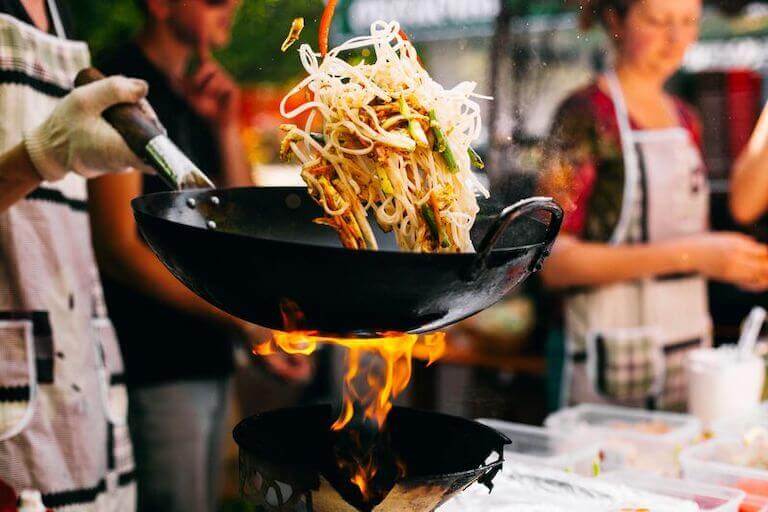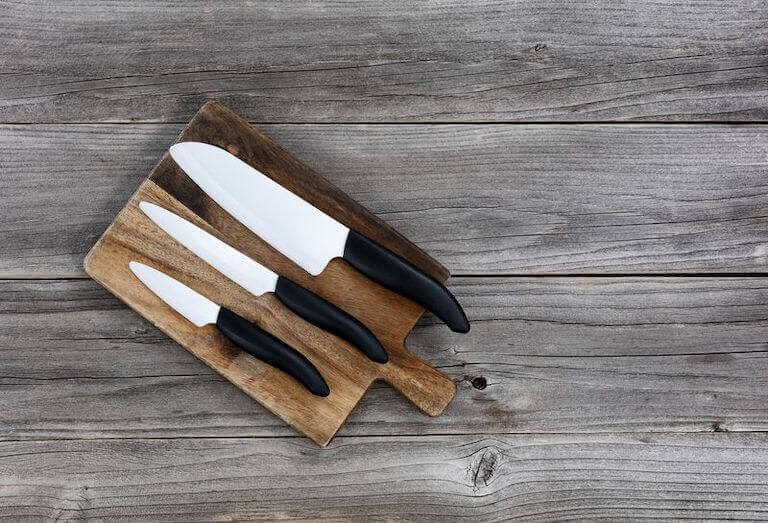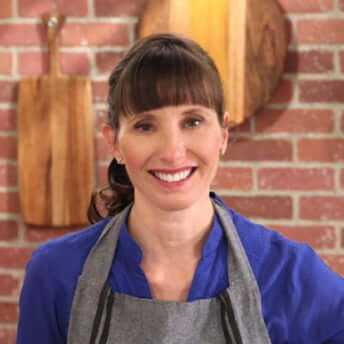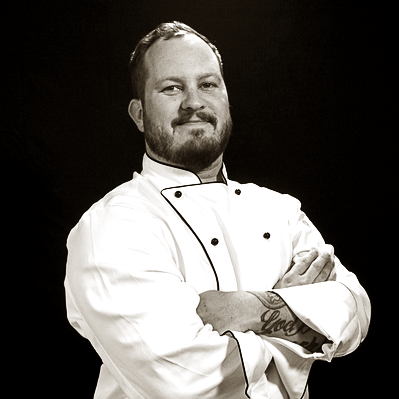If you aspire to create a professional kitchen space at home and have visions of grandeur, pause for a moment. The best approach to setting up a home kitchen like a professional chef’s workspace has nothing to do with pricey equipment or the latest gadgets. Instead, it’s about simplifying.
“There’s a myth out there that the bigger the kitchen, the better the experience,” says Colette Christian, Chef Instructor at Auguste Escoffier School of Culinary Arts. “But as a matter of fact, the opposite is true. Professional chefs work with almost everything they need at hand.”
With that in mind, here are tips to organize your home kitchen like a professional chef.
Kitchen Organization Ideas: Easy to Reach, Easy to Store
When you’re taking online Culinary Arts classes, you might want to arrange your home environment to more closely resemble professional surroundings. While most home chefs don’t have much choice about the location of their stove, sink, and dishwasher, you might have plenty of other options about how to organize your kitchen.
An organized kitchen comes down to ease of use, which means keeping as many items within reach as possible. In a professional setting, this helps everyone work faster and communicate effectively, especially when things get chaotic.
“The big takeaway is to try to think efficiently,” says Chef Instructor Luke Shaffer. “Try to put things together that you use together and store together, so you can move as little as possible and can be as efficient as possible.”
This approach means that knives and cutting boards are close together. Pots and pans would be near the stove, as would spices. Ditto for grouping similar ingredients together.
“Like items always with like items—cans with cans, tomato products with tomato products, canned veggies together,” Christian says. “I can see at a glance, ‘I have tahini, I have garbanzo beans.'”
Consider also the space relative to both the stove and the sink. For instance, Shaffer says his plates and bowls are equidistant between the dishwasher and stove. This reduces the walking and reaching in either direction.
Shaffer and Christian also recommend keeping counters as clear as possible to maximize your workspace and keep your kitchen organized.
“The only appliance I keep on the counter near my production area is a KitchenAid mixer,” Shaffer says of the heavy appliance. “And that one kind of looks nice. … Otherwise, that whole counter is pretty clear.”
Christian recommends having a prep space that allows you to shift easily to a cooking area.
“And if you don’t have counter space, I really recommend a small, rolling cart that you can put a cutting board on, and then move that over so you have everything right at hand,” she says.
Have the Right Equipment, not More Equipment
Resist the gadgets. You probably don’t need as many kitchen tools as you think you do, just the right tools and better skills. So get tossing, donating, and prioritizing.
The must-haves?
“Far less than people think,” Christian says, adding that the most important thing is to have what you’re comfortable with.
Good Cookware is Worth the Investment
Pots, pans, and baking dishes are the workhorses of the kitchen, and if you’re going to splurge anywhere, this is one place to do so.
“Get the best you can afford,” Christian says, “because cookware can last forever.”
Shaffer and Christian offered their suggestions for the essentials.
- Pans: a good 8″ nonstick pan, a 10″ saute pan (oven safe preferred), and a good skillet. Shaffer says a cast iron skillet is great, but when making something acidic you want a different material, like stainless steel. Christian says that she uses a 2-quart saucepan every day.
- Pots: A set of 4-6-8 quart pots with tight-fitting lids for braising, rice pilaf, and the like. Again, oven safe is ideal, so no plastic handles.
- 4-quart dutch oven: for stews, braises, chili, and the like; ceramic coated
- Baking dishes: a set of Pyrex baking dishes, with 9″x13″ and 7″x11″ being most versatile
- Sheet pans: two or three half-sheet pans, measuring 18″x13″ and one or two quarter-sheet pans measuring 9″x13″. Christian calls the quarter-sheet pans “a real game-changer” that are useful for sheet pan dinners
- Roasting pan

A wok can be a useful multi-purpose piece of cookware.
Tools: Look for Multitaskers
You have a seemingly endless variety of tools to choose from, as any trip to a kitchen store will demonstrate. As tempting as some of them may be, remember the golden rule: simplify.
“The only thing you should purchase that does one thing is a fire extinguisher” Shaffer says, paraphrasing Alton Brown. “Purchase things that can achieve multiple tasks.”
As with cookware, good knives can be an area worth the added expense. Christian says she has a knife that’s a few decades old. Buy the best you can afford, but don’t overdo it. She adds that, as a home chef’s experience expands, they can pick up knives that accompany their specific interest.
Some suggestions:
- Chef’s knife: 8″
- Small paring knife or utility knife: 4-6″ for smaller projects
- Santoku knife: similar to a chef’s knife but more of a straight edge and typically 5″ to 8″
- Boning knife
- Serrated knife: often used for bread
Shaffer and Christian also recommend a diamond steel or honing steel for sharpening knives. They note that knives should never be put in a dishwasher or stored in a drawer. Harsh dishwasher detergents can lead to corrosion and rust, and sharing close-knit space with other tools can dull a knife’s blade over time. Keep them in a block or on a magnetic knife strip, instead.
Plastic or wood cutting boards (about 14”x 20”) also tend to be the best choices over marble or glass, which can dull your knives. Consider putting something underneath the cutting board to help keep it in place, like the shelf liners often used in cabinets.

A few good knives can go a long way at home or in a professional kitchen.
These additional kitchen essentials can take your culinary space to the next level:
- Whisk
- High temperature spatulas
- Fish spatula
- Tongs
- Spoons—large, small, and slotted for tasting, stirring, basting, etc.
- Stainless steel mixing bowls, various sizes
- Kitchen towels (many)
- Peeler
- Fine grater
- Ladle
- Kitchen scissors
- Small containers for mise en place
- Candy thermometer
- Round mesh wire skimmer and fine mesh strainer
- Food processor
- Stand blender
- Stick blender aka immersion blender
- Can opener
- Pastry brush
- Measuring cups and spoons
- Rolling pin
- Box grater
Set Up a Plan For Storage
Once you know your tools and have plotted your kitchen layout, it’s time to think about storage. In kitchen organization and storage, Christian says the home chef can look to food trucks and other mobile experiences.
“The home chef can take lessons from that experience,” she says, “and really be thinking about how things are going to fit in cupboards and open shelving.”
Also, she says, know the height and depth of your cupboards before you go shopping for containers.
Some Tips for Storage
Store things vertically when possible. This includes skillets, cutting boards, and pot lids. Shaffer says places like Ikea sell accordion dividers that are adjustable; they can be as wide or as narrow as needed.
Shaffer and Christian also say to use clear containers as much as possible, which allow you to see how much of an ingredient you have left and which tend to keep ingredients fresher for longer. Shaffer likes the Oxo brand of containers with the white lids and vacuum seals for items like pastas, flour, sugar, and brown sugar. Christian says commercial kitchens use square containers that stack well and maximize space.
Make sure the labels on your containers face the front so you can see at a glance what you have. For items in the refrigerator, use a permanent marker to write the date on the lid when you open a jar; for those in the freezer, masking tape makes for a good label.
To store sauces, soups, and prepped ingredients, try the deli containers like those that come with takeout. They come in quarts, pints, and cups and use the same-size lids for easy stacking. Shaffer says professional kitchens use these (and the containers can be ordered; you don’t have to buy a bunch of takeout!).
For additional storage, consider investing in a Metro rack, a wire shelving unit that can come with wheels. Christian teaches Baking & Pastry and says her two KitchenAids are on the rack whenever she’s filming or doing a demo. This helps her keep her counters as clear as possible.
Want to Know More About How the Pros Think?
When students enroll in one of Escoffier’s in-person or online culinary programs, they can receive a standard toolkit containing utensils and tools specific to their program, plus a chef’s uniform. This kit includes items students may need to get started with a professional culinary education.
Students can also study under chef instructors who have spent years in the field, giving them ready access to experts.
Contact us to discuss your goals and which programs can help you lay a great foundation in culinary skills.
HERE ARE SOME OTHER ARTICLES YOU MIGHT LIKE:
- Pet Peeves About Professional Kitchens: Escoffier Chef Instructors “Get Real” About Kitchen Life
- Learning How to Cook: A Guide for Beginners
- Yes, Online Culinary School Works. Here’s How.



